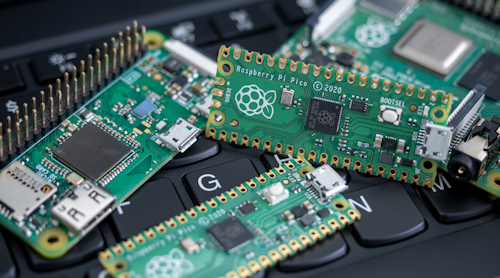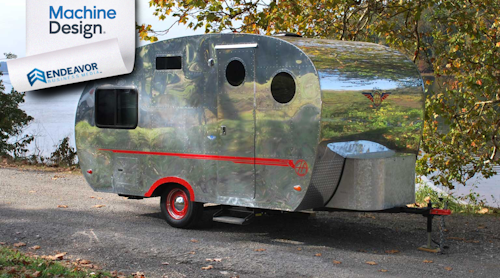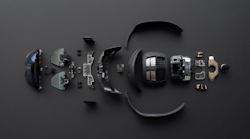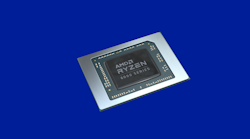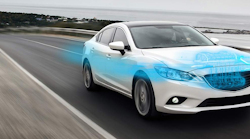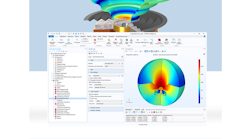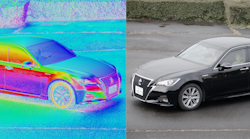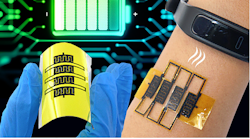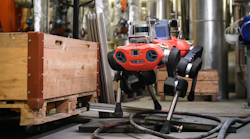It was late on Father’s Day, around 11:55 p.m., when I finally got around to writing my editorial for this issue, which was due the next day. I had some ideas of what I wanted to write about and was busy gathering information. One piece of information I needed was in an e-mail I had received a couple of weeks ago, so I launched Microsoft Outlook.
Rather than going straight to the e-mail I needed, I started skimming the e-mails that had come in over the weekend. The first one I came across was a notice that my niece had wished me a happy Father’s Day in a Facebook post. I clicked on the link, got on Facebook, and sent a reply. Then I went back to Outlook and continued skimming the e-mails. One subject line stopped me cold. It said, “Bob Pease Killed in Car Crash.” I read it in stunned disbelief. I looked at the sender: Paul Rako, the analog editor fromEDN. It must be true, I thought. Horrible news, but true.
In part, Paul said that Bob was killed when his car left the road as he drove from Jim Williams’ memorial service yesterday. It’s doubly unfortunate that two of the greatest analog minds in the business passed in the same week. As it was earlier on the West Coast, Don Tuite was online and sending e-mails to our staff. He sent a link to aSan Jose Mercury Newsarticle: “Driver, 70, Dies in Saratoga Crash.”
The short article stated all the facts: A 70-year-old San Francisco man was killed after his car hit a tree in Saratoga on Saturday evening, according to the California Highway Patrol. The man was traveling eastbound on Pierce Road at an unknown speed when he failed to negotiate a curve to the left at about 5:45 p.m. The driver’s 1969 Volkswagen Beetle veered to the right off of the roadway and crashed into a large tree on the right shoulder. The man was not wearing his seatbelt and it appears he was killed instantly.
Everyone who reads Pease Porridge knows that Bob drove a 1969 Beetle. Bob brought it up many times over the years and just recently in a popular column about unintended acceleration. Everyone knew this because Bob was unrivaled as a columnist in this industry. Though he was certainly an analog guru who could write about the nuances of a very difficult subject area, he also talked about everyday (and not so everyday) life situations.
Bob told me many times that his column was about thinking. Whenever he tackled a topic, he essentially welcomed readers into a dialogue about how to properly think about that topic, at least from Bob’s point of view. But, if you wrote to him, he would always consider your point of view as well and tell you what he thought.
Bob was greatly saddened by the death of Jim Williams. As you may know, Jim died recently after a massive stroke. During the following days, Bob corresponded with me about Jim. In one e-mail, which I think says a lot about the way Bob thought and lived, he said: “Jim did write more huge SYMPHONIES of big Apps. Systems. I wrote more small ones. We always had very similar ideas on helping Users with Analog problems: We never turned down a request for Analog help. We agreed on that.” Then, Bob said: “I am very SCRUPULOUS about taking my 5 or 7.5 mg of Coumadin every day. I don’t know if Jim was on Coumadin. Coumadin = Warfarin = Rat Poison, good for preventing Strokes.”
鲍勃还问我转载的一部分列在doctoring that he had written years ago about how to tell if someone was having a stroke. This particular column, “What’s All This Floobydust, Anyhow? (Part 14),” contains a section called DOCTORING STUFF, PART 4C—STROKE DIAGNOSIS.
In Bob’s grief about Jim, his first thought was to let the readers of this magazine know how to tell if someone is having a stroke. He starts off the section of this column by writing: “Many people know that in case of a heart attack or stroke, it is very important to get the victim to medical care very quickly, within much less than an hour. But what do we know about diagnosing such an unhappy person?” And he goes on from there to impart his knowledge on this topic and hopefully help someone save a life someday.
Unfortunately, we now have to say goodbye to Bob and all the wisdom he so generously shared over so many years writing forElectronic Design. He was a tremendous talent and we will miss him greatly. You can findhis latest columnin our July 7 issue.
You won’t be surprised to learn that he had the drafts for number of future columns in the works in addition to his popular “Bob’s Mailbox” collection of correspondence. We will work with his family on bringing those columns to you in the future. We think he would have wanted you to read them. And finally, wherever he may be right now, I’m sure he’s thinking about writing, “What’s All This Car Crash Stuff, Anyhow?”


